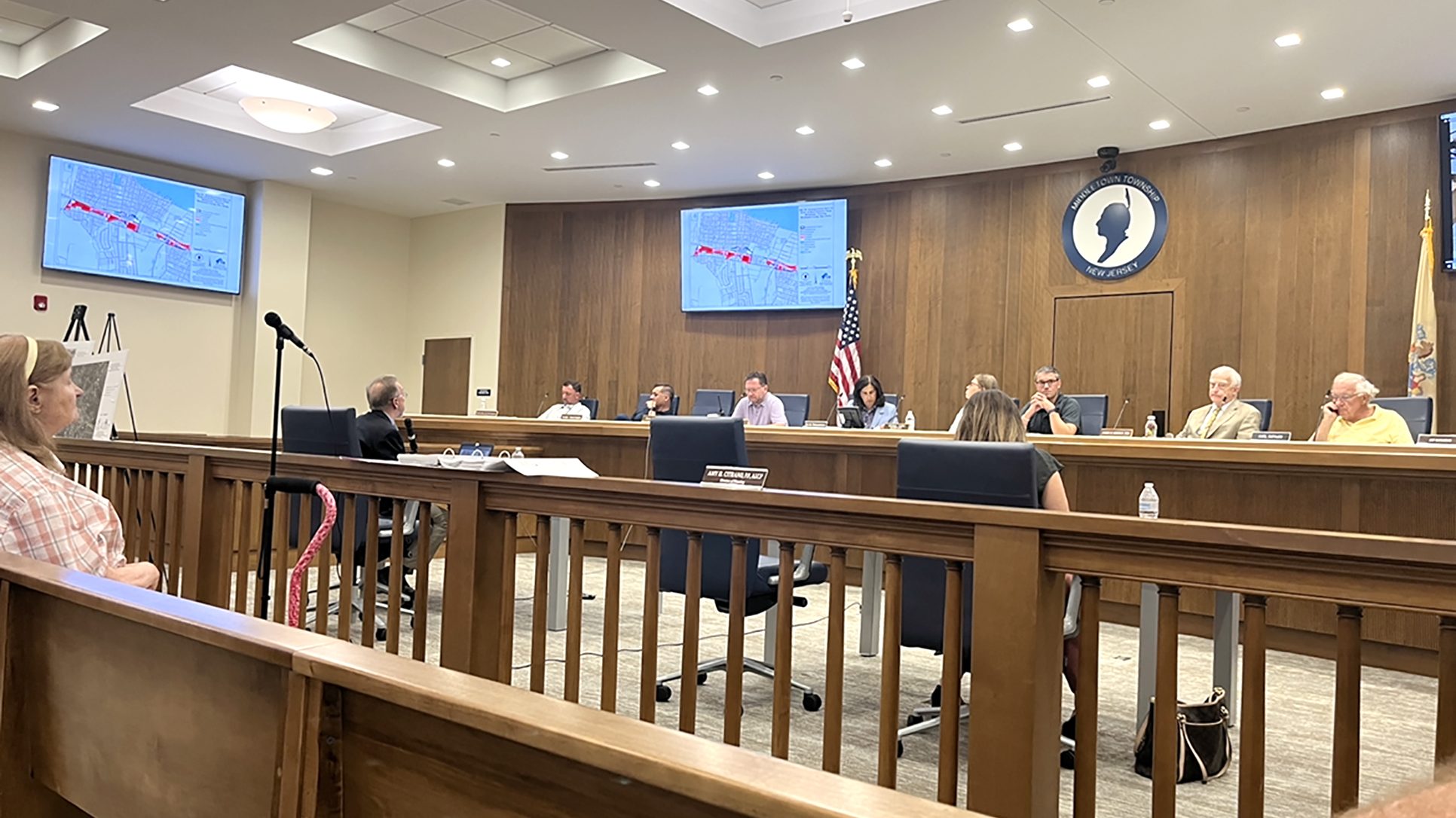
At the third and final public meeting about the revitalization of Route 36, the Middletown planning board voted unanimously to approve all the properties recommended in the improvement study as areas in need of redevelopment. Sunayana Prabhu
By Sunayana Prabhu
MIDDLETOWN – Amidst grumbling from some property owners, the planning board unanimously voted to accept and forward Route 36 redevelopment study to the township committee.
The committee had authorized the planning board to undertake the study and make recommendations about areas in need of redevelopment along the Route 36 corridor.
Through a series of public hearings, the last of which took place Aug. 3, Stan Slachetka of the engineering firm T&M Associates, gave the board and the public an in-depth review of those properties determined to have met the statutory criteria to qualify as an area in need of redevelopment.
For the study, Slachetka explained that the firm divided the five miles of the township’s Route 36 corridor into three sections, A, B and C. Section A is the westernmost part of the road between Palmer Avenue and Main Street in Port Monmouth; Section B falls between Main Street in Port Monmouth and 12th Street in Belford; and Section C is the easternmost end of the corridor between Normandy Road and Leonardville Road on the border with Atlantic Highlands.
According to the report, 27 parcels in Section A, 33 parcels in Section B and 21 parcels in Section C meet the criteria for redevelopment. Those parcels included both commercial and residential properties. Some of the significant landmarks that are designated areas in need of redevelopment in the study include the shuttered Port Monmouth Elementary School and former restaurants Crustini and Wild Scallion.
Certain photographs presented as part of the study, which began in 2019, were outdated, according to property owners, leading to what they called “property shaming.”
For instance, the former Wild Scallion site, vacant for at least two years, recently received approval for two commercial units and is currently under construction. Photographs in the report show a vacant building in disrepair.
Slachetka noted that the final report filed May 26 does have some updated photos.
Joseph P. Julian Jr., owner of Julian’s Bait & Tackle on the corner of Leonardville Road and Route 36, told The Two River Times he felt including old photographs of the property in the presentation was “not fair.” The business, which Julian inherited, has been operating for 91 years. Julian’s wife Kaitlin said property owners have been defensive because the township started the redevelopment process on a “bad note” by showing outdated pictures of their properties at public hearings.
The Julians have started sprucing up their property themselves. Properties that are designated for redevelopment qualify for subsidized state loans, but that is only useful “if I need a loan to do any of this work,” Joseph said. “It gives you a little break in your incentives at the bank.”
Addressing the concerns of embarrassed property owners during the meeting, Slachetka emphasized that being in the study “is not a negative on the property or does not indicate that the property owners are doing anything inherently wrong with their properties, but because of the way that the sites are being used, the configuration of the site, how everything kind of works together, collectively, (if it is designated in the report) it met the criteria.”
Emad Elgohail, owner of Mogas, an auto salvage business in Leonardo fronting Route 36 next to the Academy Bus station, took offense at his property being referred to as a “hazard condition.” Elgohail complained at the meeting that the bus station uses “diesel fuel” that is “killing all the birds” but was nonetheless excluded from the report which he thinks targeted “small businesses” like his.
Slachetka pointed to the traffic circulation, parking and a storage area on the Mogas property that qualified it for redevelopment consideration, noting the Academy Bus station property did not meet “the threshold for being designated in need of redevelopment.”
James Gorman, planning board attorney emphasized that a property being designated an area in need of redevelopment is not a negative but rather something that benefits property owners, allowing them to redevelop “in a better way, a more efficient way.” Gorman also said the designation could lead to a reduction in taxes.
“The intention is to do something better with a property – for the highway, for the township, for the owners, for the neighbors,” he said.
The Julians, like some other residents, were also concerned the study is the first step in Middletown taking properties through eminent domain, as happened in the early 2000s in Long Branch where property owners won a lawsuit against the borough.
“It ain’t gonna happen on 36 anytime soon, but it’s just the start of it,” Joseph worried.
Throughout the meetings, Slachetka and the board members assured property owners that the redevelopment study is for noncondemnation purposes only, which means no property would be acquired through eminent domain. Designating a property as such allows the township to retain control of how it is ultimately utilized and closes the door on builder’s remedy lawsuits which can take development out of the planning board’s hands.
“This designation does not authorize the township to take the property,” Slachetka said. Additionally, he emphasized that the whole process is governed by state law – the Local Redevelopment And Housing Law – which describes how the planning board is to undertake the study and deter- mine if areas are in need of redevelopment.
The township committee is expected to review the planning board’s recommendation at its next meeting Aug. 21 and, if they agree with the board’s findings, will adopt a resolution formally designating the properties as areas in need of redevelopment. Ultimately, that resolution will be sent to the commissioner of the New Jersey Department of Community Affairs for final approval and authorization.
The article originally appeared in the August 10 – 16, 2023 print edition of The Two River Times.














